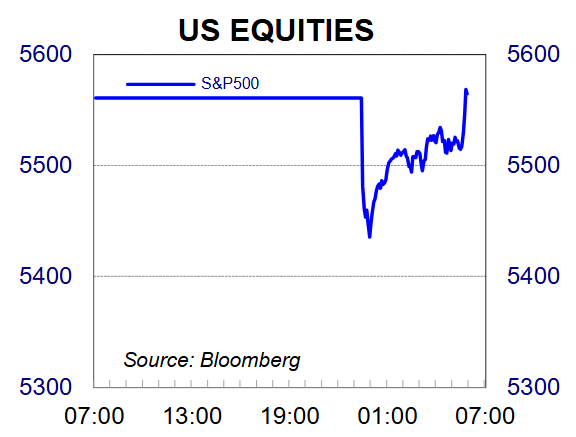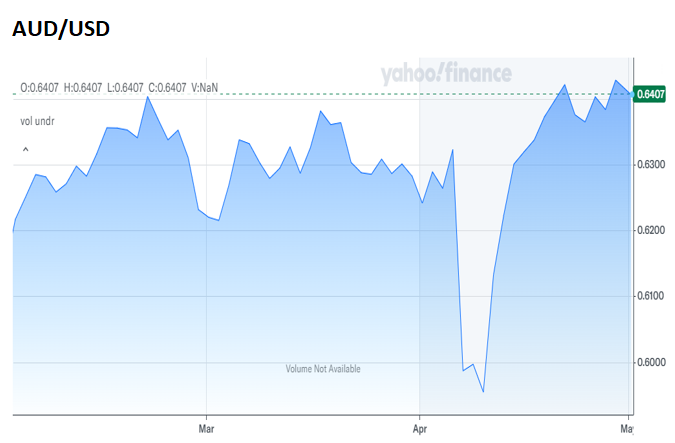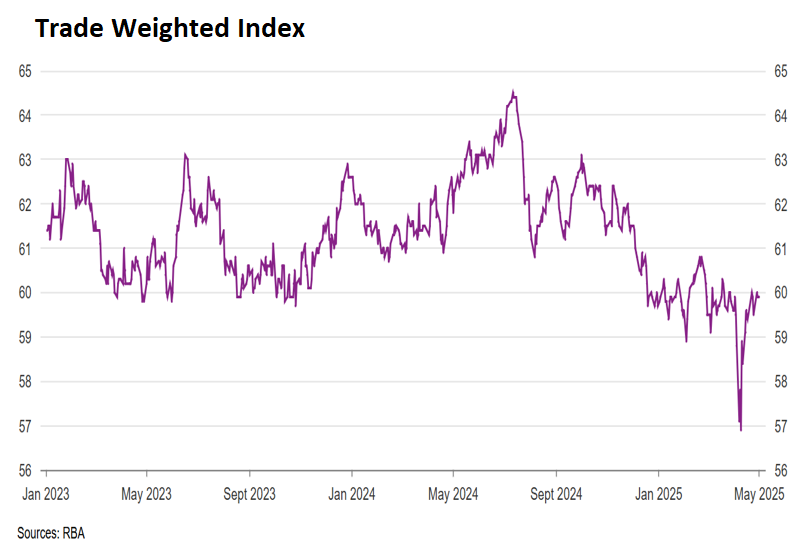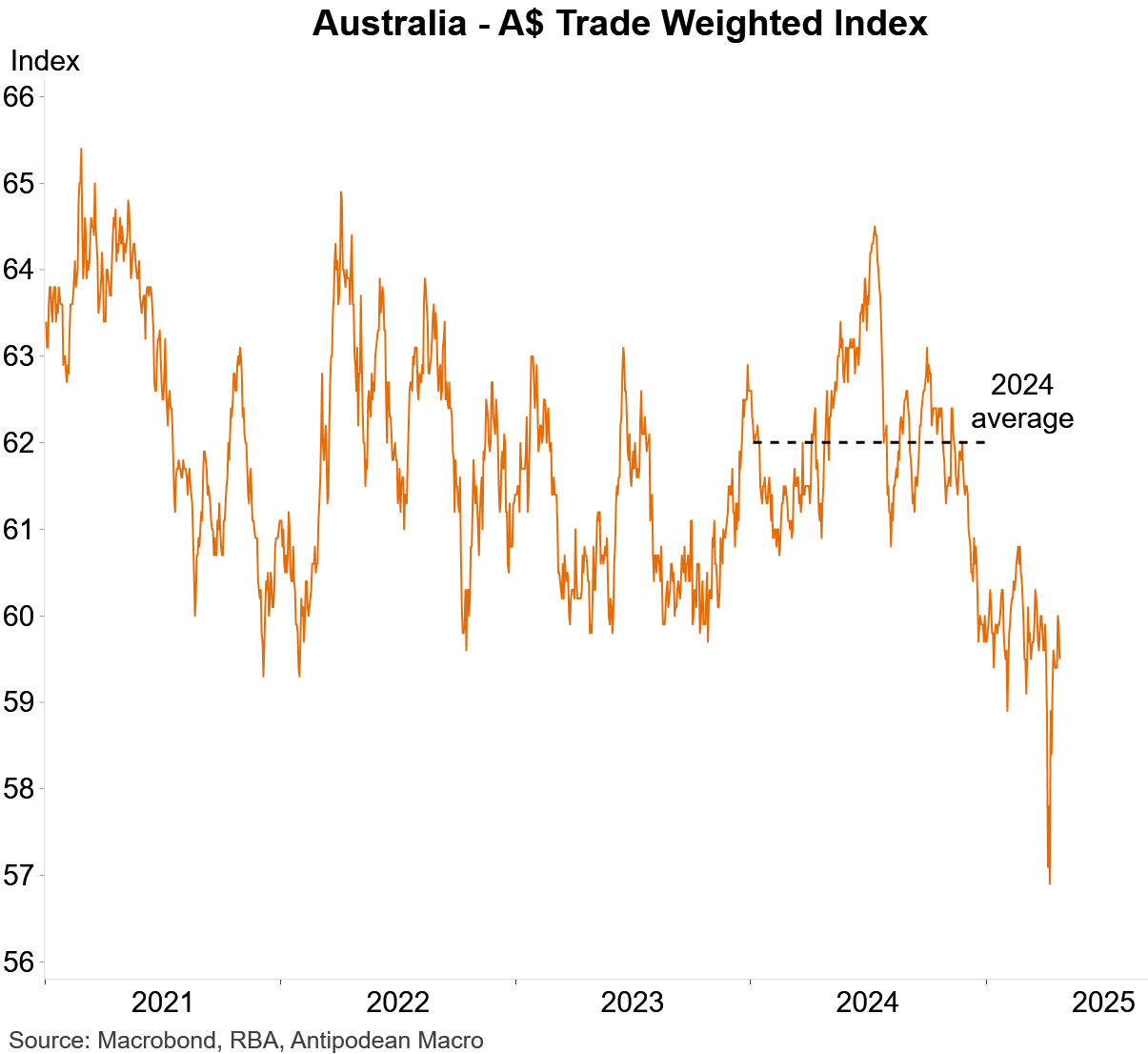The US share markets were mixed on Wednesday after data showed the US economy contracted in the March quarter for the first time in three years. The decrease underscored concerns about the impact of US tariffs and the global trade war on growth.
The Dow Jones index rose by 142 points, or 0.4%, and the S&P 500 index gained 0.2%. However, the Nasdaq index lost 15 points, 0.1%.
In April, the Dow Jones fell by 3.2% and the S&P 500 slid 0.8%. However, the Nasdaq index rose by 0.9%.

In US economic data, GDP contracted by 0.3%/saar in Q1 (survey: -0.2%). ADP private payroll also jobs rose by 62,000 in April (survey: +115,000).
After hitting a two-year low following the announcement of President Trump’s “Liberation Day” tariffs, the Australian dollar has rallied strongly.

However, the Aussie was weaker overnight against the US Dollar, dipping from US64.16 cents to just above US64.00 cents at the US close.
The trade-weighted index (TWI), which measures the value of the Australian dollar relative to its most important trading partners, has also bounced back hard since Liberation Day, recovering virtually all of its losses:

However, as shown below by Justin Fabo from Antipodean Macro, the TWI remains well below the 2024 average:

The Chinese renminbi comprises a 29.5% share of the TWI, well above the second-placed US dollar (11.3%) and the third-placed Japanese Yen (10.1%). Therefore, China significantly influences the Australian dollar TWI.
The Trump administration’s heavy tariffs levied on China (with the exception of electronics such as smartphones and computers) should, therefore, have had an oversized impact on the Australian dollar.

